We all like to get into political debates. “We spend way too much money on defense.” “We don’t spend nearly enough on welfare programs.” “We give too much money in foreign aid.” Where does the US government spend its money?
If we are being honest with ourselves, however, not many of us really know how much the US government spends on anything.
For example, do you think you could put these categories in order from most spending to least? Or even more simply, which of these categories do you think the federal government spends the most money on?
- Defense
- Education
- Foreign Aid
- Social Security
- Medicare and Medicaid
- Transportation
If you don’t know the answer, (like us and most Americans), then this article is for you.
An Overview of the Federal Budget
Here’s an overview of the federal budget for Fiscal Year 2023:

As you can see, the government spends most of its money on just three categories: healthcare, Social Security, and defense. In fact, the US government has been called “an insurance company with an army.”
The Defense Budget and Foreign Aid
It was surprising to us that defense wasn’t higher on the list, given that the United States spends more on its military than the next nine highest-spending countries combined.
In fact, when we drilled into the defense category, a significant chunk of defense spending goes to benefits for veterans and foreign aid, meaning what the government spends on “traditional” military expenditures (tanks, active-duty soldiers, planes…) is even less than the graph above suggests:
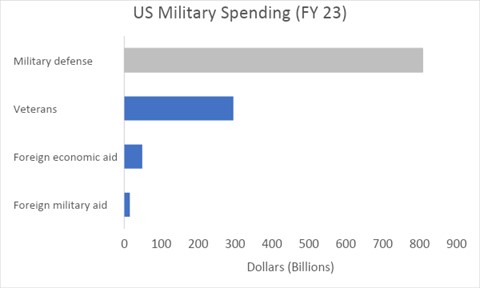
Foreign aid, which Americans often believe makes up the largest portion of government spending, only contributes to 5% of the military budget and 1% of total federal spending.
We thought the defense budget might make up a lower share than previous years now that the wars in Afghanistan and Iraq have ended. Our assumption was true, but not by as large of percentage as we thought:
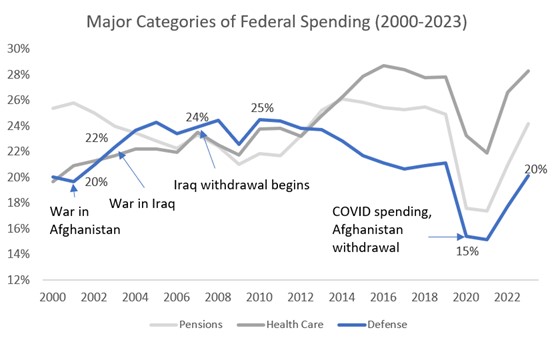
While defense was the highest category of spending from 2004 to 2012, it was only slightly higher than health care and pension spending, which now exceed defense spending significantly.
Healthcare Spending
When we say the government’s largest category of spending is “health care”, what does that mean?
Health care includes Medicare, which provides subsidized health care for seniors 65 and older, Medicaid, which provides public health insurance for people with low income, and then various other projects including money used to combat public health emergencies, like COVID 19. The public health emergencies money does not include the COVID stimulus checks.
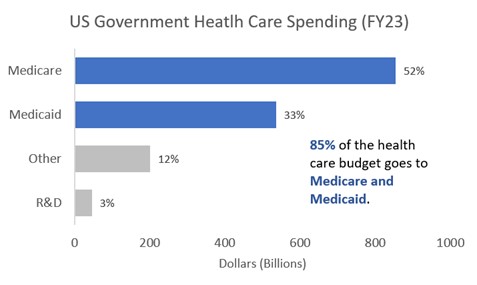
Between Medicare, Medicaid, and CHIP (Children’s Health Insurance Program), over 40% of Americans are enrolled in a public health program.
Pensions and Social Security
The Pensions and Social Security category, as you may have guessed, includes pensions for Federal workers and Social Security. Though we think of Social Security primarily as a retirement program, it also includes disability insurance for people no longer able to work.
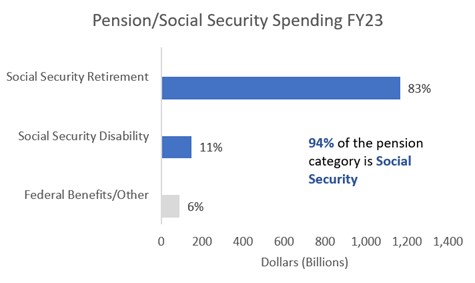
Interest on Debt
The national debt, or how much money The United States owes to borrowers, has increased over time.
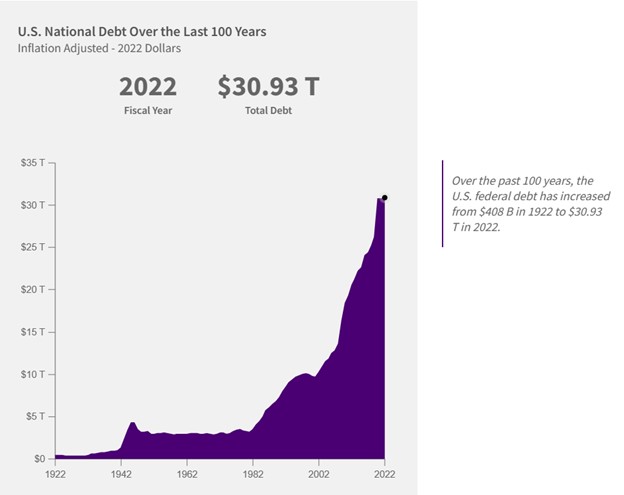
Due to inflation, the graph above can be slightly misleading. Economists prefer to look at the debt to GDP ratio, which represents the debt as a proportion of the country’s total economic output. This ratio has also increased sharply over the past 50 years.
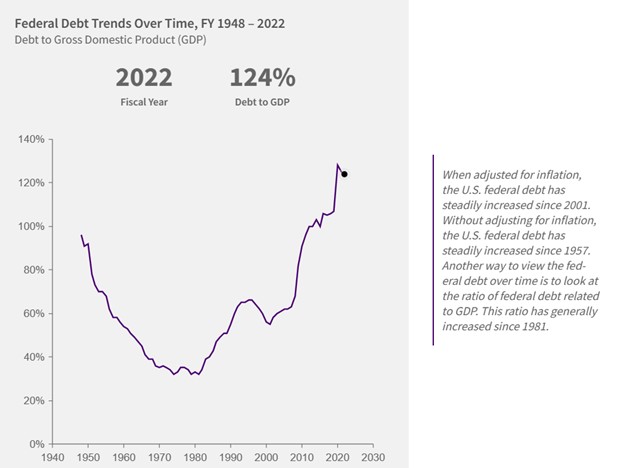
As the national debt increases, the interest paid on that debt increases as well. As a proportion of the budget, however, spending on interest on the debt has remained relatively stable. Relative increases in other spending, as well as an environment of extremely low interest rates, have contributed to this stability.
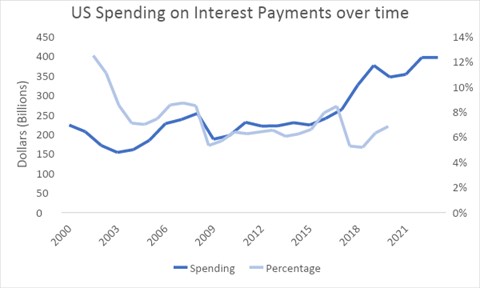
As interest rates rise over time, experts worry that increasing interest rate payments will threaten the country’s overall fiscal outlook. And as interest rates rise, only a smaller portion of the budget will be available to spend on the other categories of spending.
Conclusion
Though national spending can be a complex and hotly-debated topic, we hope this article served as a small primer on where the government is spending money.



